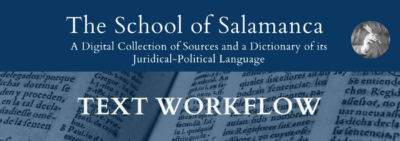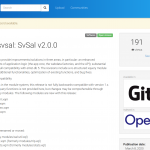 Since its beginning in 2013, the Salamanca Project has been developing a text editing workflow based on methods and practices for sustainable and scalable text processing. Sustainability in text processing encompasses not only reusability of the tools and methods developed and applied, but also long-term documentation and traceability of the development of the text data. This documentation will provide an important starting point for future research work. Moreover, the text preparation must be scalable, since the Digital Source Collection comprises a relatively large mass of texts for a full-text digital edition project: in total, it will involve more than 108,000 printed pages from early modern prints in Latin and Spanish, which must be edited in an efficient and at the same time quality-assured manner.
Since its beginning in 2013, the Salamanca Project has been developing a text editing workflow based on methods and practices for sustainable and scalable text processing. Sustainability in text processing encompasses not only reusability of the tools and methods developed and applied, but also long-term documentation and traceability of the development of the text data. This documentation will provide an important starting point for future research work. Moreover, the text preparation must be scalable, since the Digital Source Collection comprises a relatively large mass of texts for a full-text digital edition project: in total, it will involve more than 108,000 printed pages from early modern prints in Latin and Spanish, which must be edited in an efficient and at the same time quality-assured manner.
In the following, I will introduce the sequence of stages that each work in the Digital Source Collection goes through, from locating a suitable digitization template in a public library to metadata and the completion of a full text in TEI All format, enriched with the project’s specifications. Continue reading “The School of Salamanca Text Workflow: From the early modern print to TEI-All.”

